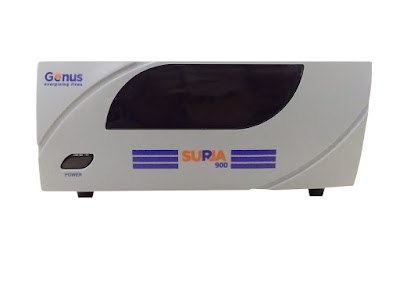3 Questions to ask when choosing an inverter with battery for home
 |
| Battery Genus |
Unless you live on a deserted island, electricity is sure to have made its presence felt in your life. From the time you wake up when you take phone off charge to when you heat up your lunch in the microwave and to the time you switch off the bedside lamp and go to bed at night, we use electricity in myriad forms. So, when the power is out, it can get frustrating. The lights and fans, television, computer, microwave- nothing can work. The only way to get by- install an inverter with battery for house. So how do you choose the perfect inverter? Here are some of the questions you will have to ask yourself.
Conventional or sustainable?
Where earlier the choice was between inverters and
generators, one of the main choices to be made is between traditional,
conventional inverters and solar powered inverters. The latter is growing to be
very popular today. Solar powered inverters can be connected to the grid
wherein they don’t act as source of power backup but purely to generate
electricity sustainably or connected to a battery for
continuous power generation. These solar powered inverters are reliable and
generate clean electricity without contributing to pollution. However, they do
have a higher installation cost and may not be feasible for renters.
Branded or local?
There are many different inverters available in the market
today. One of the basic ways of differentiating between them is to categorize
them as local inverters and branded inverters. Local, unbranded inverters are
definitely cheaper but they are often constructed with unreliable materials and
have poor quality standards. These inverters come with no warrantee or
guarantee and the after sales service is questionable. On the other hand,
branded inverters have an extensive warranty and will help you with the
installation and maintenance.
Pure vs modified sine inverter?
Inverters can also be categorized on the basis of the
technology they use to convert DC to AC power. This is needed because batteries
store power in DC while home appliances need AC power to function. A pure sine
wave inverter manages this conversion in the form of smooth waves while a
modified sine wave inverter does the same in blocky waves and thus has a lot of
distortion. Because of this, modified sine wave inverters are not suitable for
powering delicate appliances. However, you must note that these inverters are
generally cheaper.
Today, getting an inverter for power backup is as essential
as getting your home connected to the main power grid. It’s the only way to get
continuous electricity at home. Once you get the answers to these three
questions, you will have to understand your home’s power requirements. This is
the foundation for choosing an inverter that fits your budget and meets your
power requirements. You will then need to get a battery with a power capacity
that matches the inverter capacity. Ideally, you should buy your inverter and
battery together to ensure that they match.



UTL Solar offers one of the best inverter battery in India. chek them out
ReplyDelete